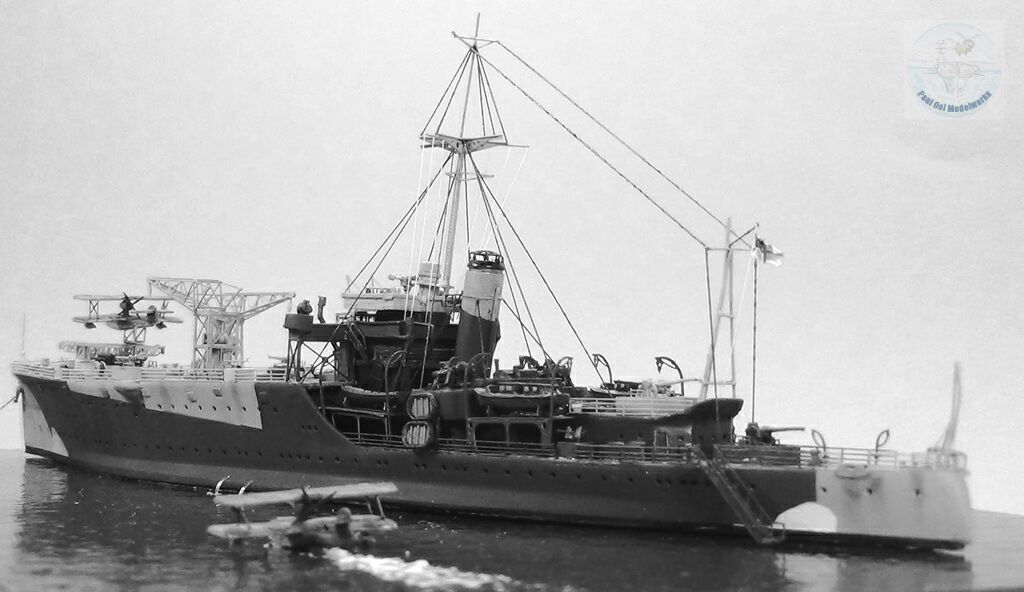
I was looking for an unusual ship design to build and came across this 1942 fit of a Royal Navy seaplane tender. The ship seems like two very different parts put together. The forward 2/3rds of the ship has an open layout with lots of open deck dominated by three cranes and a single catapult. The aftward 1/3 of the ship seems to be all of the usual accoutrement of a destroyer all crammed together. HMS Albatross started life as the Australian-built HMAS Albatross in 1928, and ended as passenger ship “SS Hellenic Prince” in 1954. Originally intended to support the Fairey IIID seaplane, the latter was withdrawn from service shortly after the launch of the ship, sending it into a service limbo that was to last most of her life. Finally she was equipped with the Supermarine Walrus, with which she saw service in Africa supporting air patrols during the Battle of the Atlantic. Her most significant contribution was providing air cover in the Atlantic after the loss of aircraft carriers HMS Glorious and HMS Courageous in 1941.
Gallery
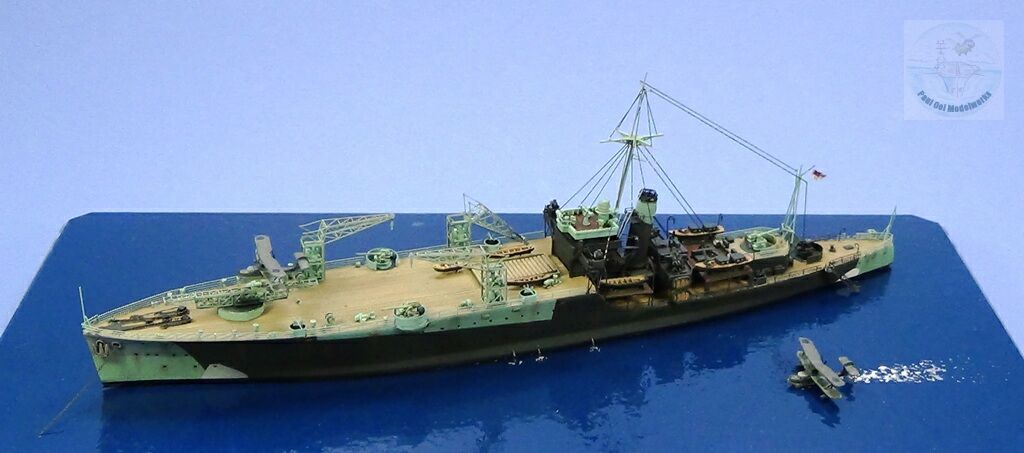
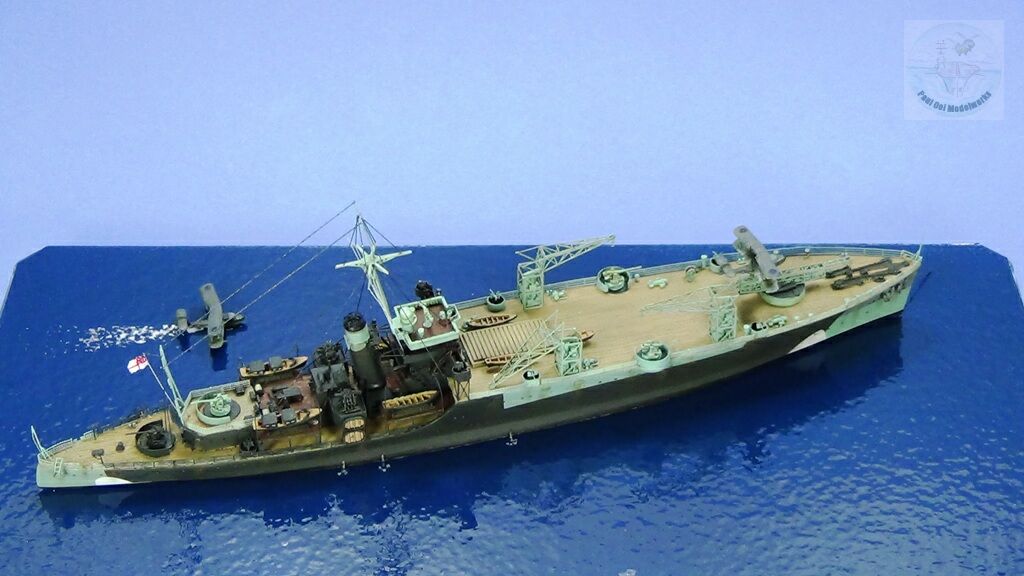
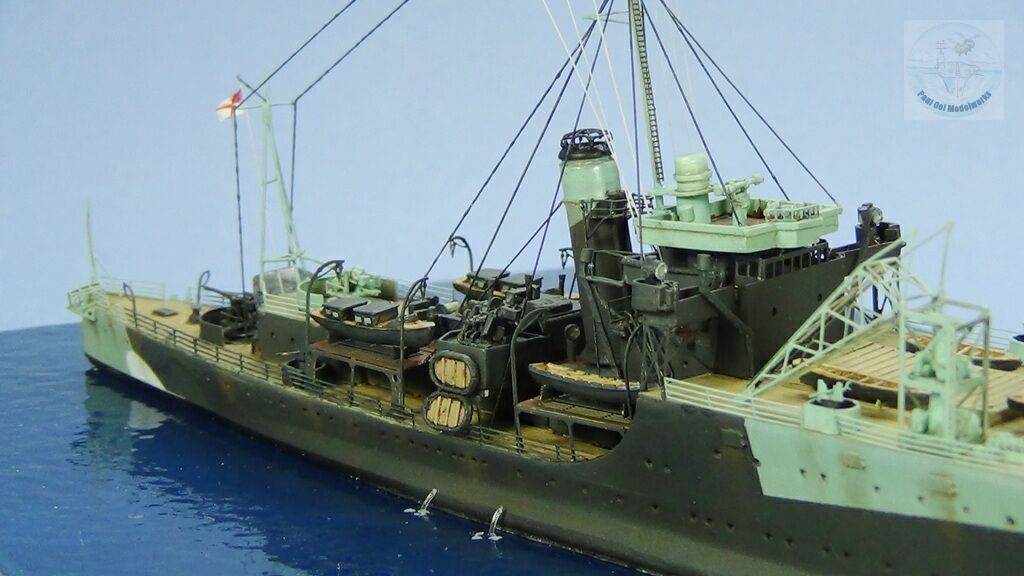
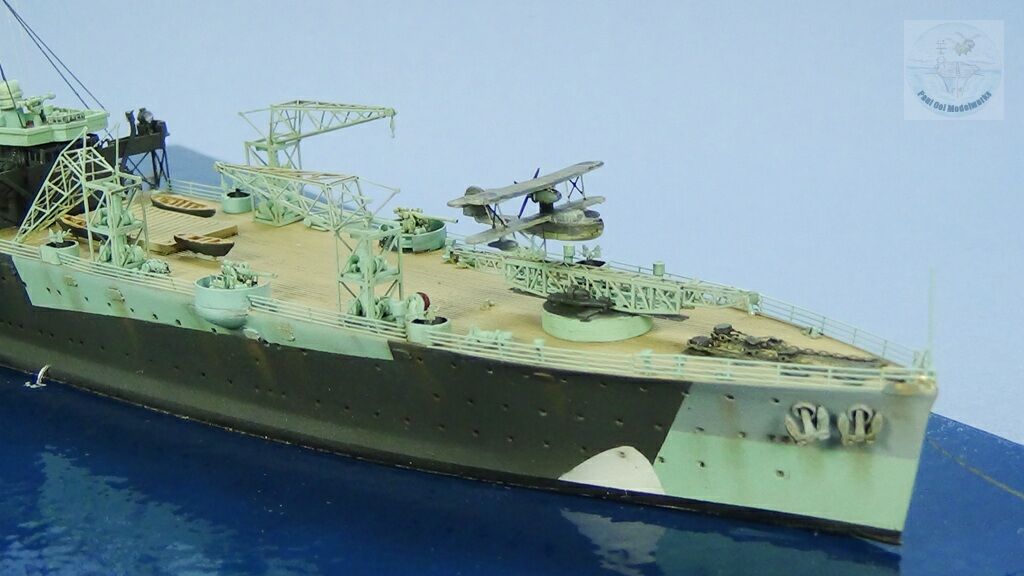
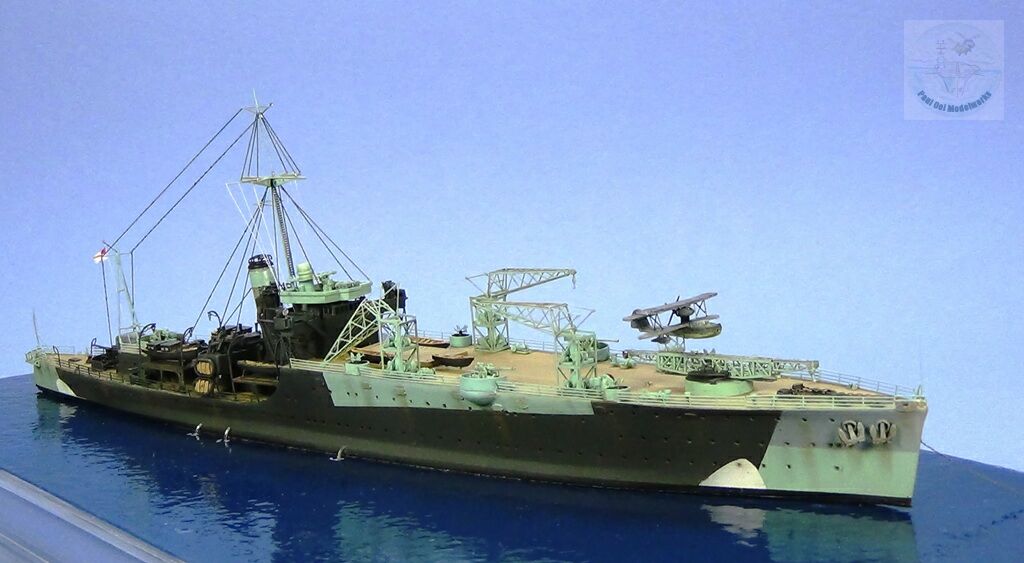
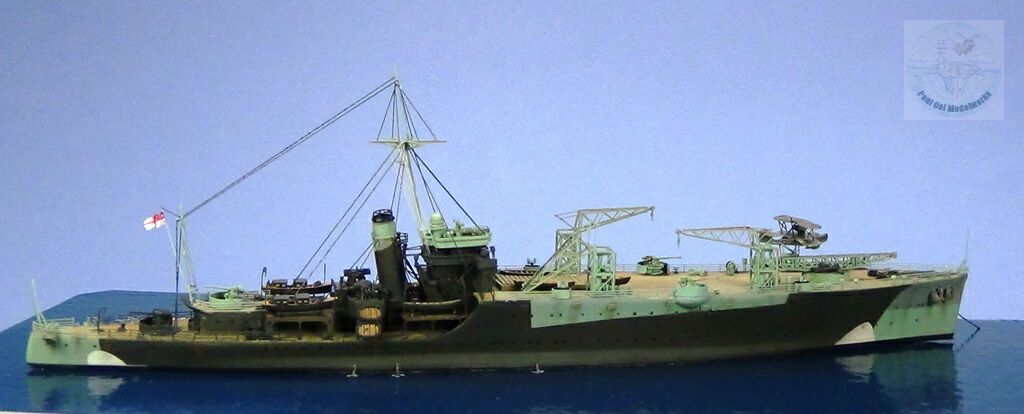
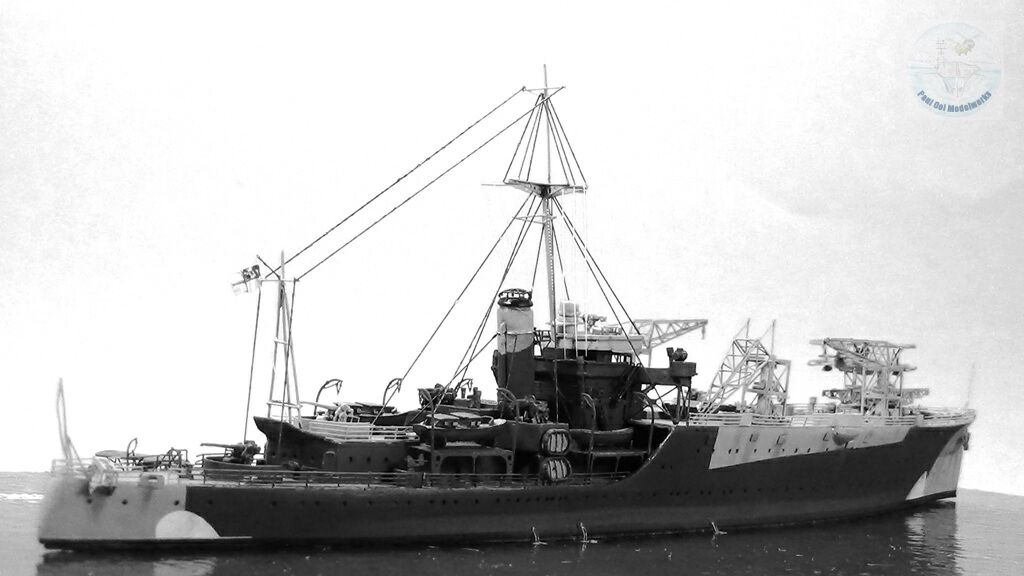
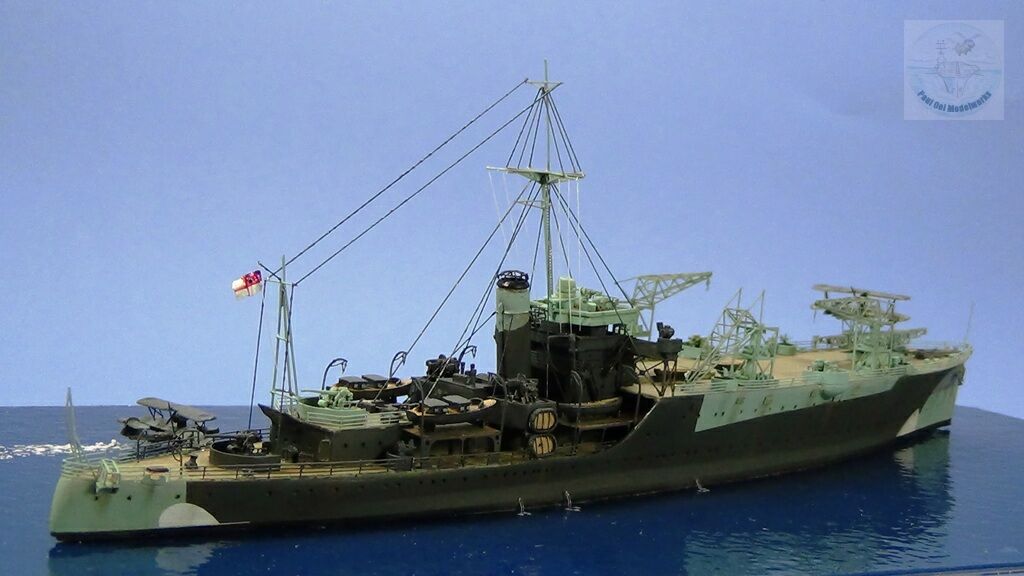
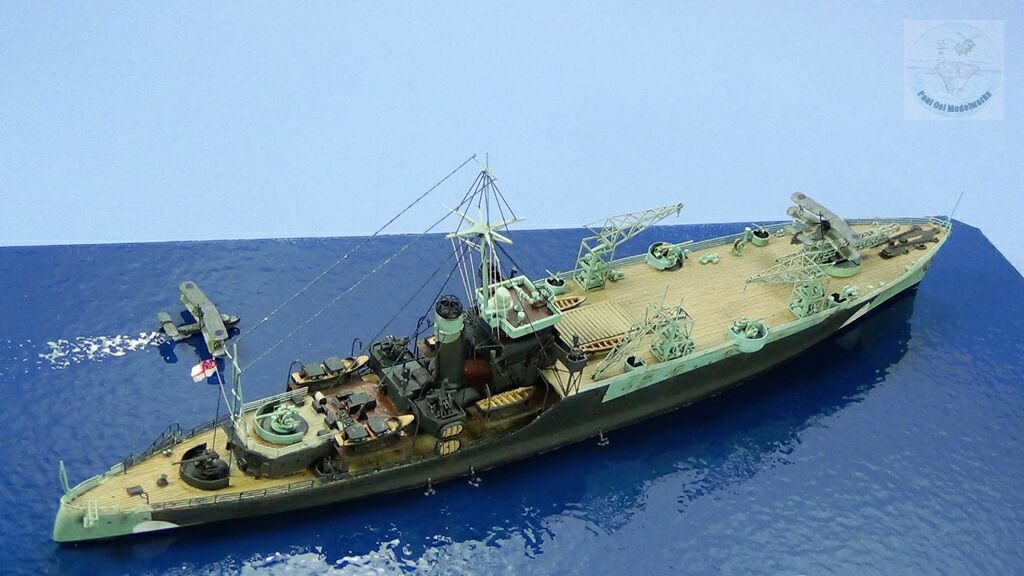
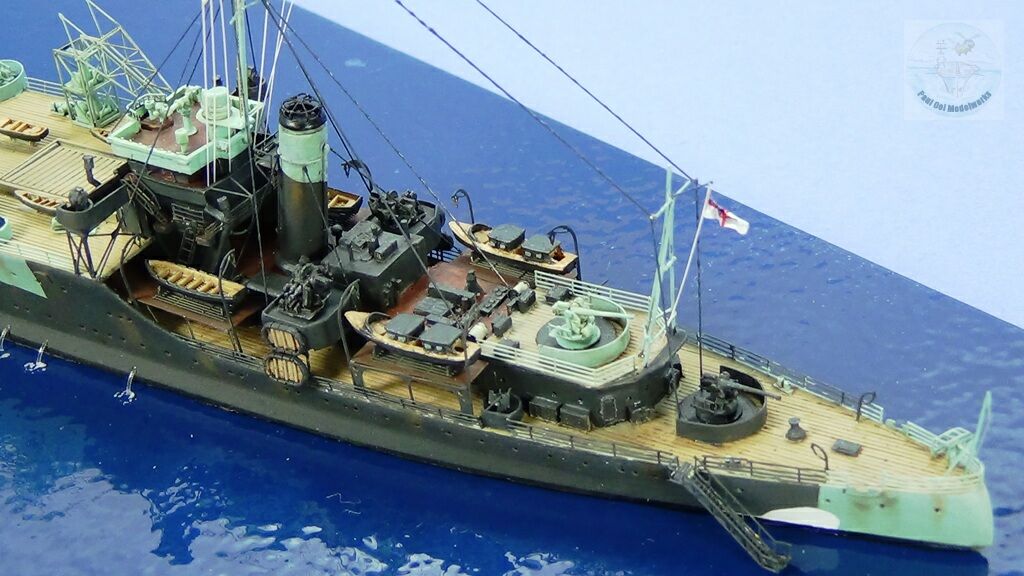
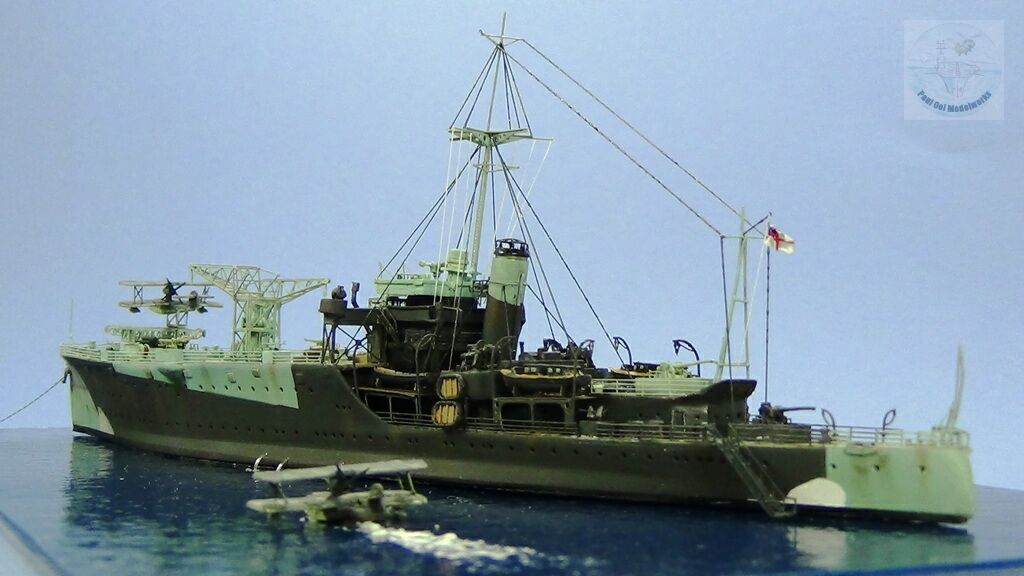
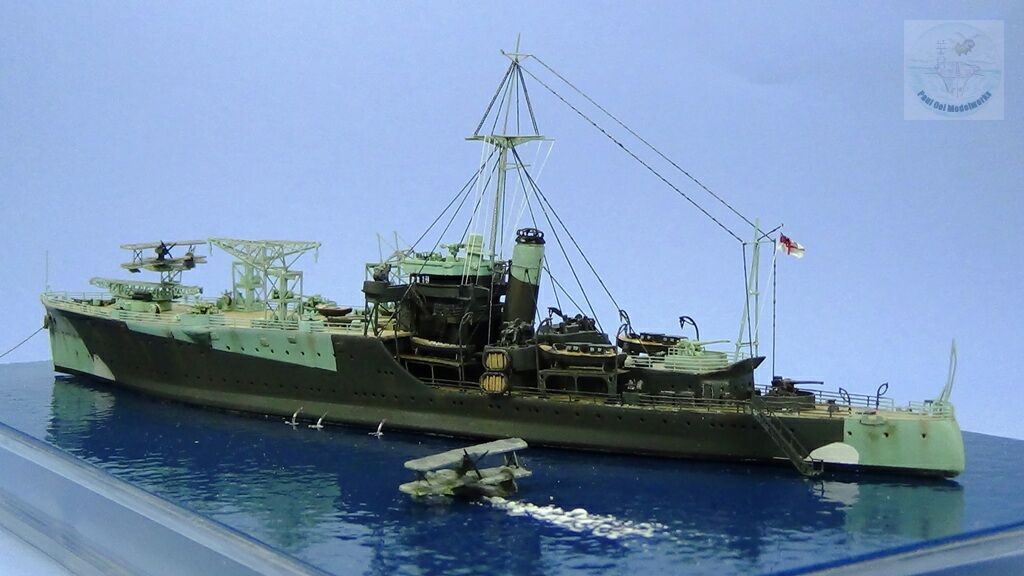
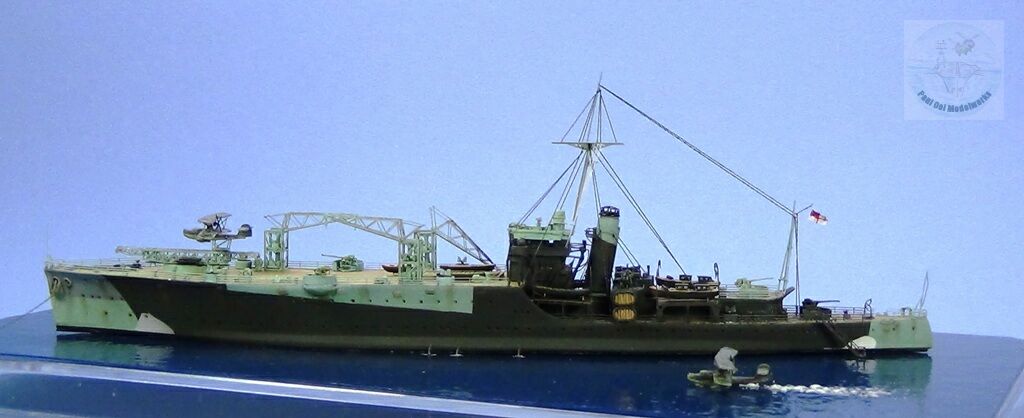
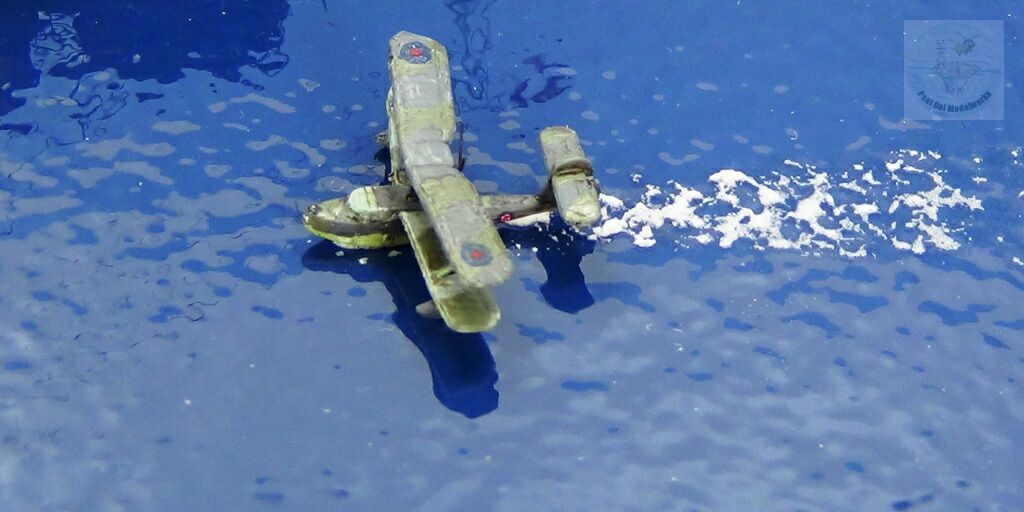
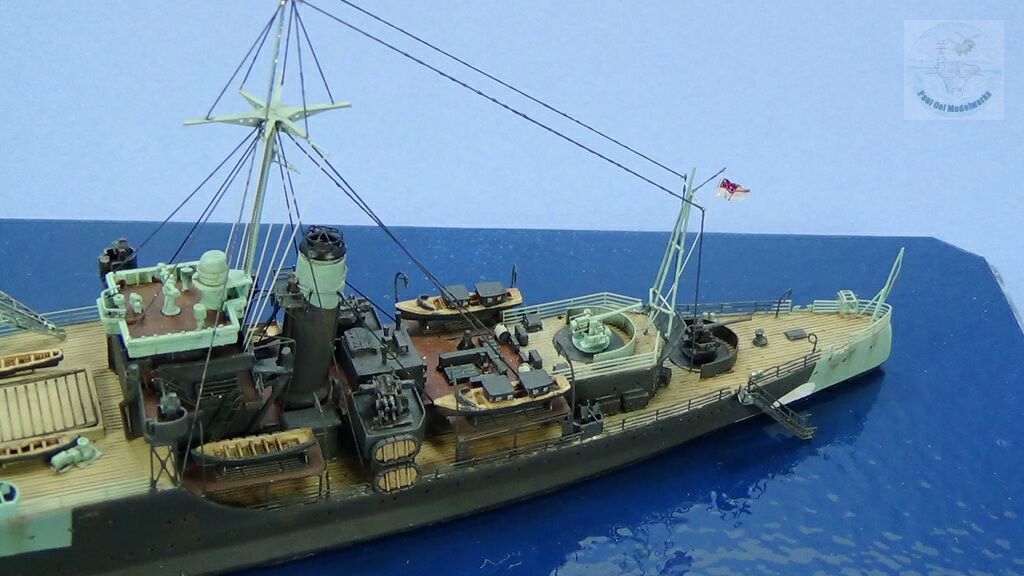
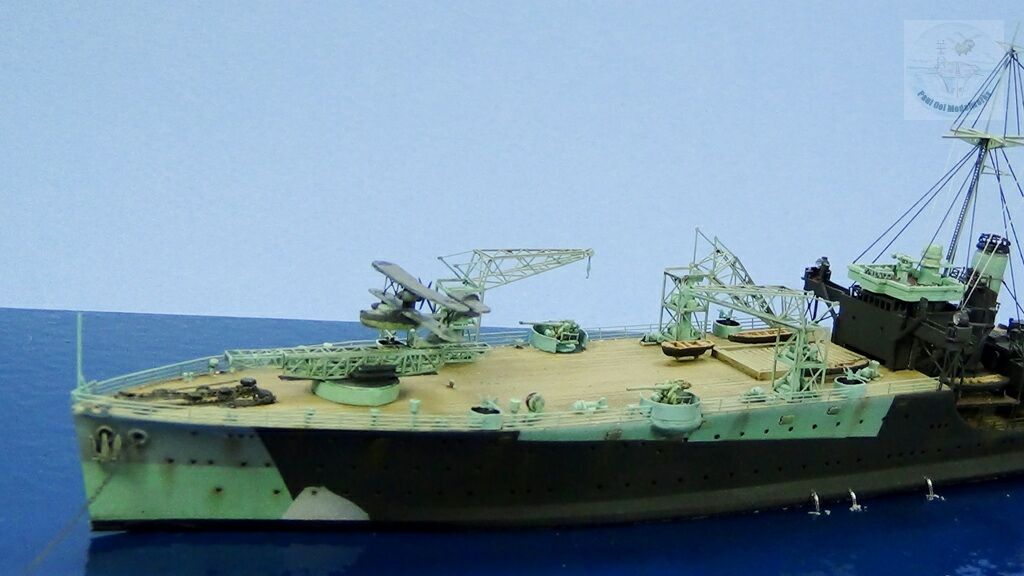
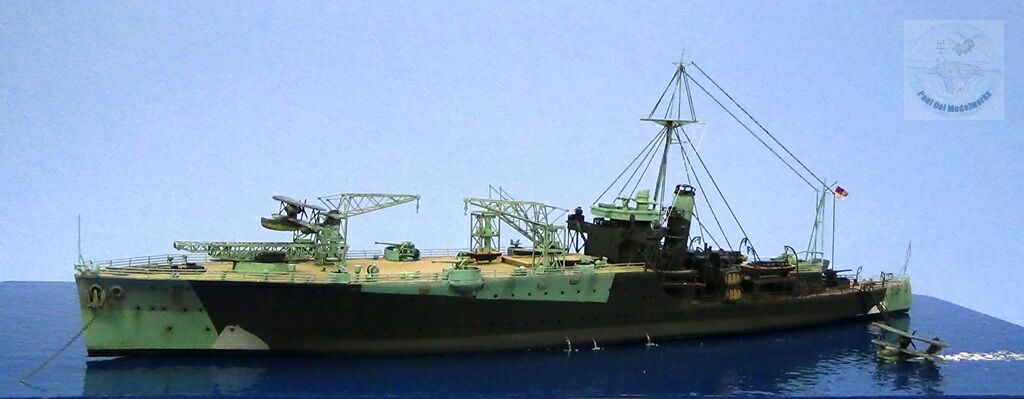
Construction Notes
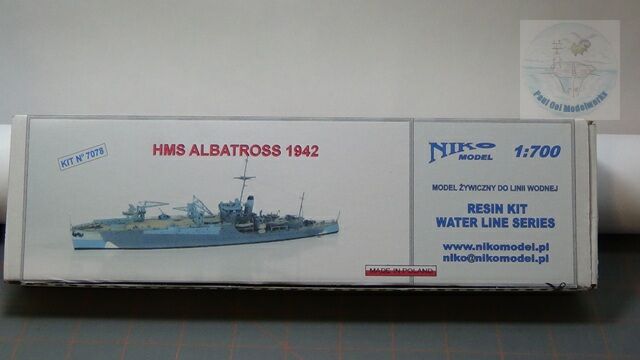
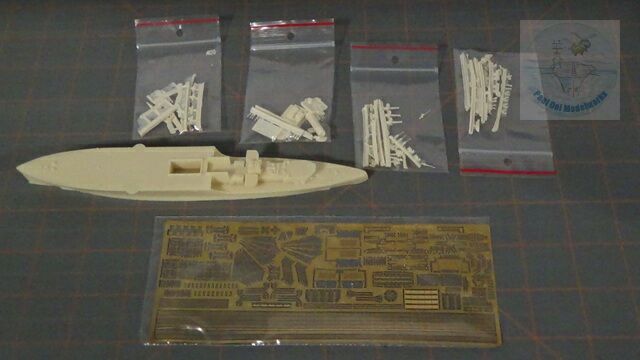
This 1/700 scale resin kit is issued by Niko Model of Poland, a maker of rare model subjects like HMS Albatross. Together with the fine resin parts (some are very delicate, handle with care) the kit has a large photo etch fret and 2 wire rods of different diameters to build your masts. This kit is more suitable for advanced and experienced modelers as some scratch-building is needed for the mast. In order not to lose any of the tiny resin parts, it is highly recommended to put all parts into a work tray, and also to carefully empty out all the plastic bags to make sure that all resin bits are recovered. The details are excellent but resin flash is a constant problem.
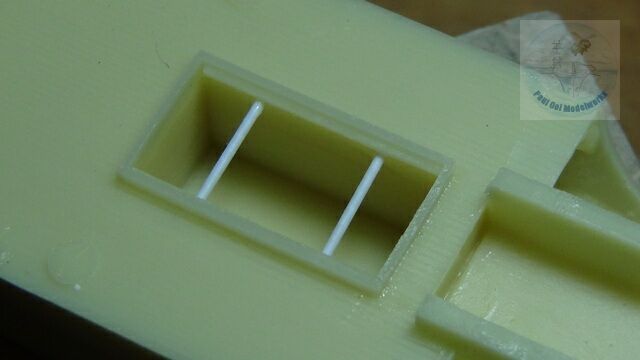
At the beginning, I added evergreen rods in the hangar hatch because the cover piece falls right into the hole with no feature to hold it in place.
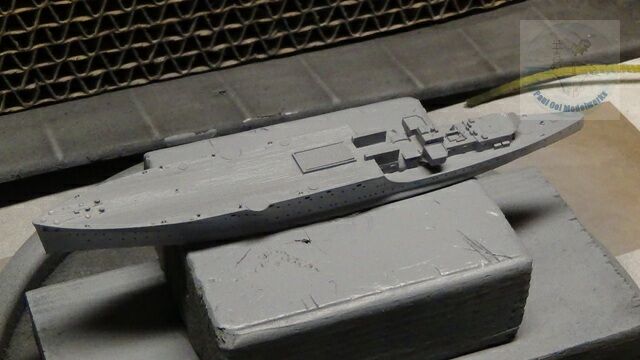
Next, I primed the hull and deck with grey primer. This helps to give a neutral solid background for other colors.
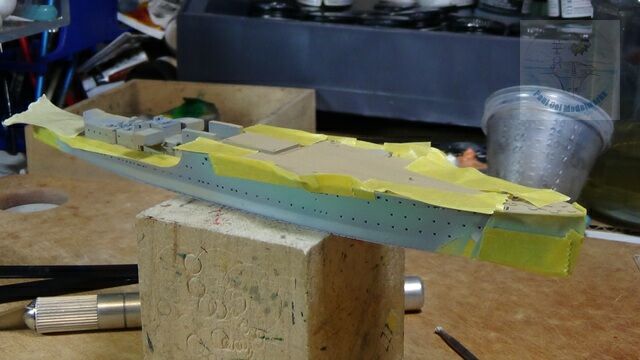
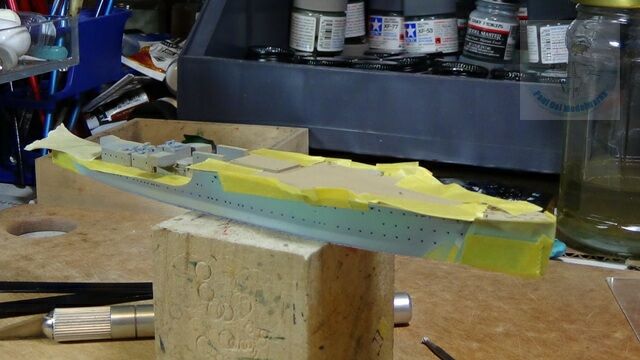
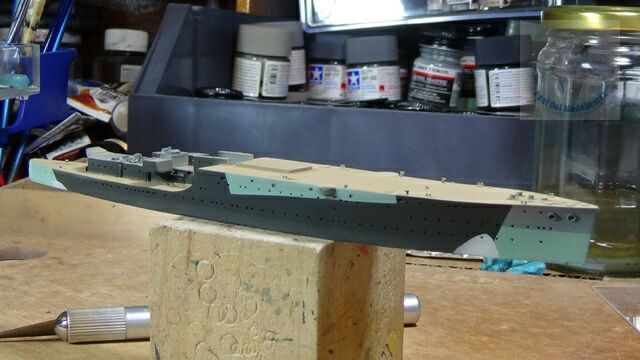
Very early in the build, I airbrush the hull camouflage which is one of the more interesting ones with a false bow wave and false wake to fool an observing U-Boat into thinking that the dark grey portion looks like a smaller, faster destroyer and thus mistime their torpedoes. I start with the wooden deck tan for the main flight deck and poop deck as well. Then I apply RAF Medium Sea Grey as a substitute for the hard-to-find RN G45 Warm Light Grey. Next, I apply white bow and wake patterns, and mask those off. The last two colors applied are B55 Light Greenish Blue (White Ensign enamel RN17) and G10 Dark Grey (White Ensign enamel RN23).
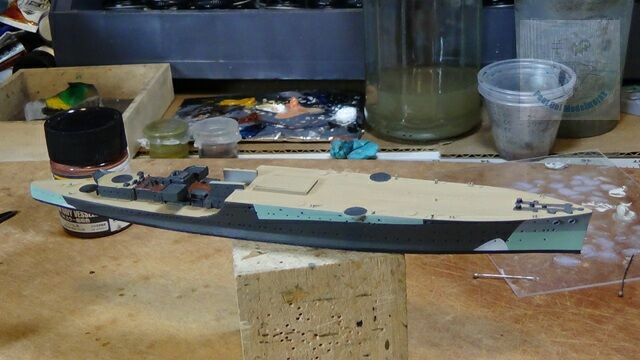
The other deck details (G10 Grey and Tamiya Red Brown XF64 as a substitute for RN Anti-Fouling Red) are brush-painted in.
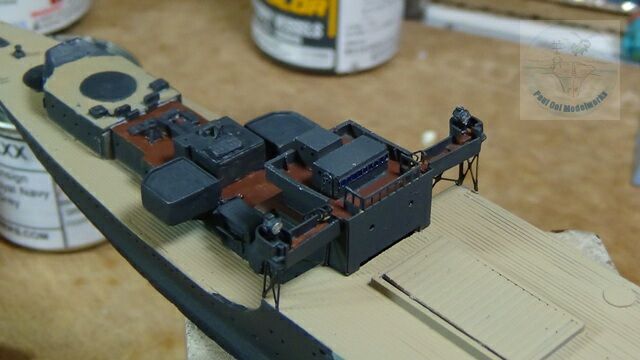
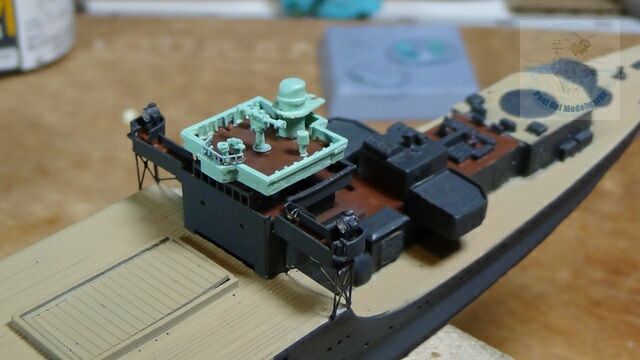
Next came the construction of the wheelhouse and main superstructure together with the port and starboard search light platforms. This area is extremely tricky because of the alignment of several elements to get the construction right. Lots of dry fitting needed before gluing things down.
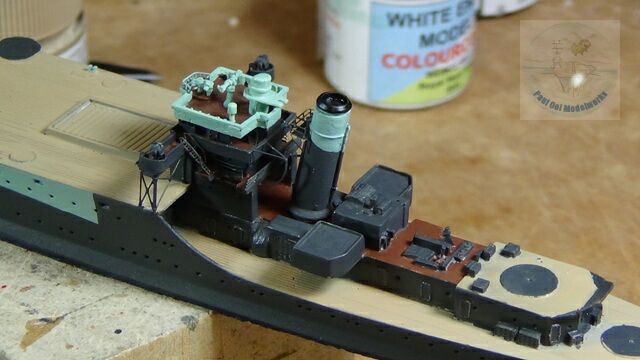
The funnel is painted and installed. Since there are no locating features for the funnel, check with the true scale drawing of the model on the instruction sheets for placement.
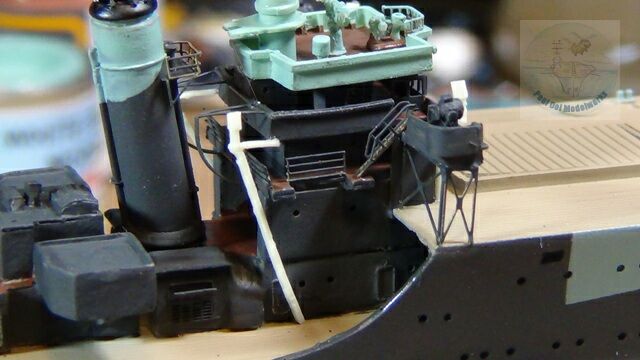
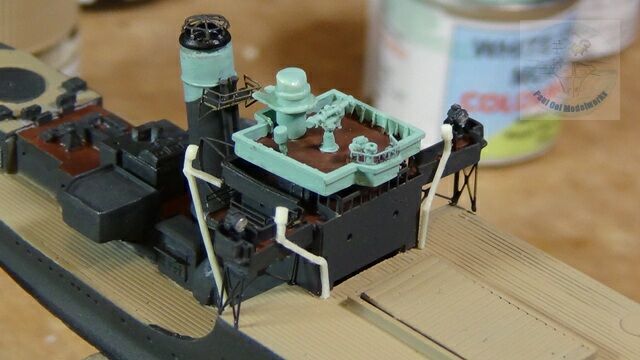
The placement of the ventilation vents and ducting are also not very clear in the instruction sheet and required me to check with old photographs of the Albatross before settling on this configuration.
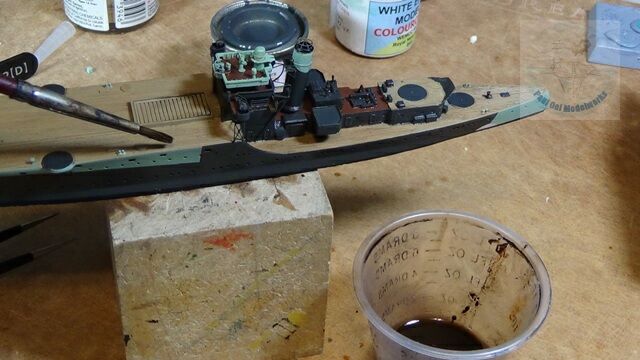
Before adding the boat decks, I apply a wash of turpenoid and oil paints (50% lamp black, 50% burnt umber) on the decks and structures.
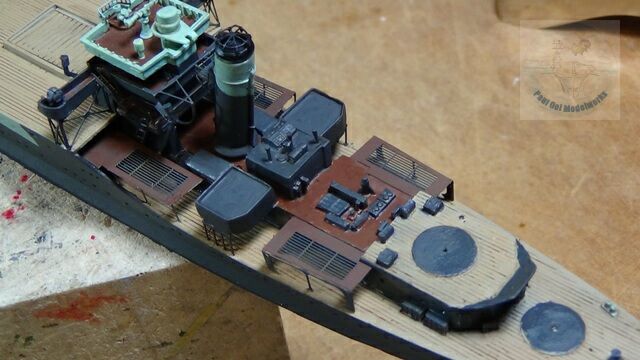
The boat decks are then installed over the main deck. I also install other structure details over the galley, and midship section.
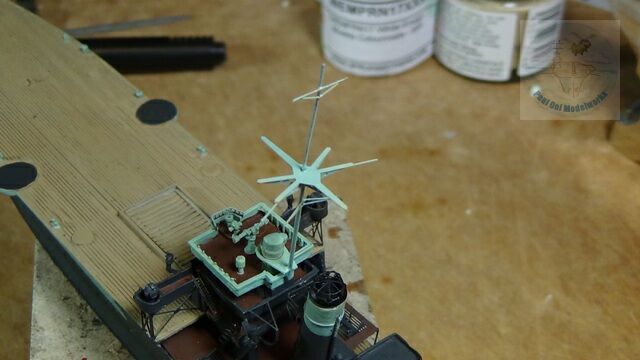
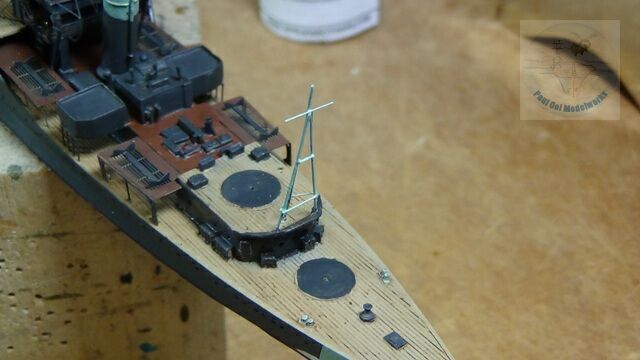
The main mast is constructed out of 0.8mm brass rod (included with the kit), thinner sections of 0.6mm rod, and photo etched sections. The rear mast is made from 0.6mm brass rod and 0.3mm wire.
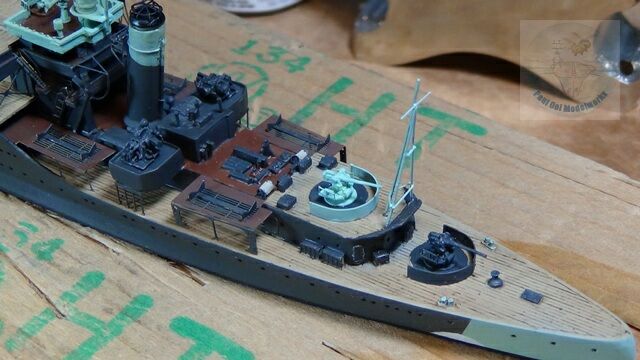
The anti aircraft guns and 3 in guns are installed in their emplacements.
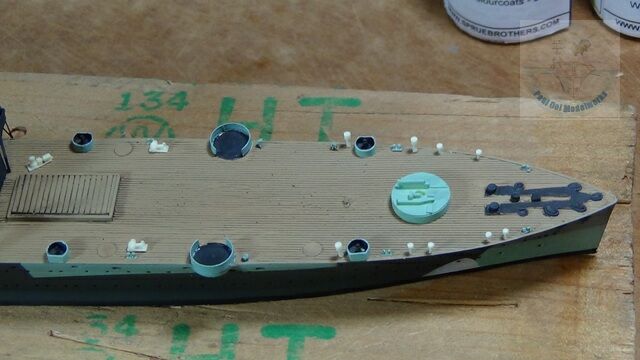
Work on the flight deck starts with addition of the catapult platform (check location with the scale drawing in the instruction sheet). Other deck ventilation columns and pumps are also added at this time.
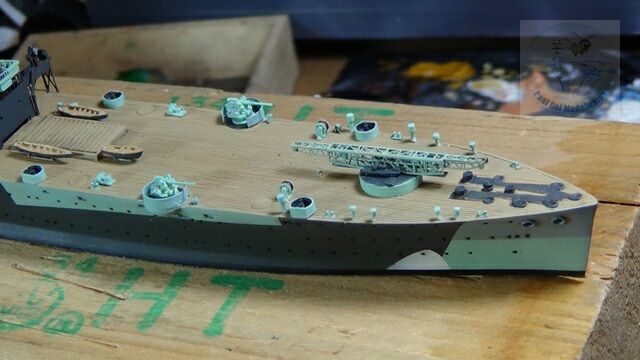
Next were the catapult rail and 3 in deck guns.
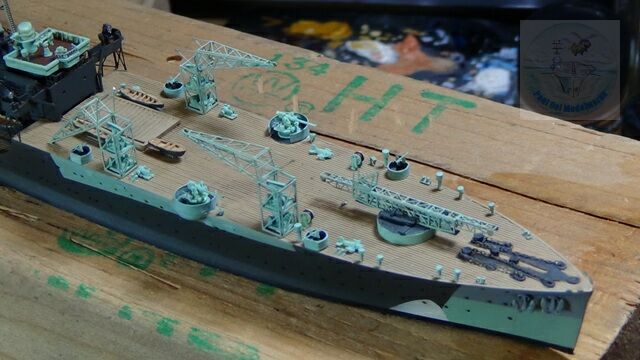
Finally the three large cranes are installed on the flight deck. I kept these to last so that I could handle the model more easily during the previous steps. Once these cranes are installed, the flight deck area becomes fragile and easy to damage.
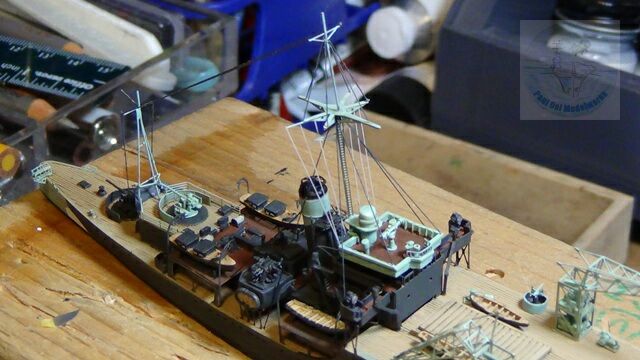
Finally the rigging and lifeline rails are added to the model. Weathering is done to the hull using pastel chalks. The main ship herself is completed.
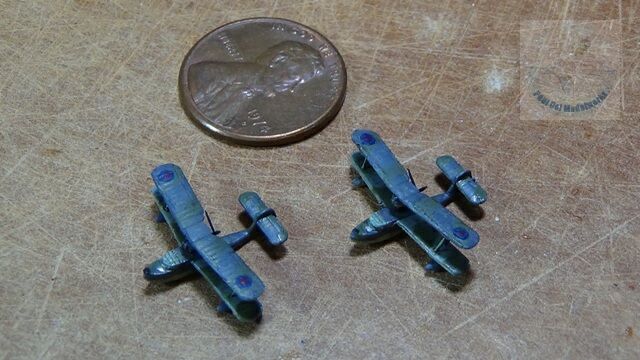
The two Walrus seaplanes are built and painted in Atlantic patrol colors. one can appreciate how tiny these planes are when compared to a US 1 cent coin.
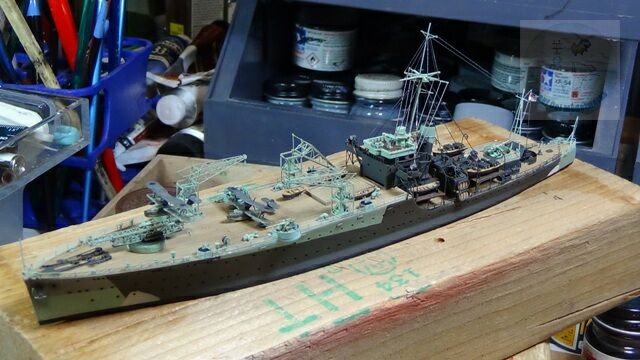 The model is completed and ready to be mounted on its permanent base.
The model is completed and ready to be mounted on its permanent base.


OMG!!!!
Great work! Can you provide the length of the scratch built masts? thanks
Approx:
Main mast lower section = 17mm
Main mast upper section = 15mm
Rear mast central = 20mm
Lovely to see. My Grandfather bought the ship from the Admiralty just after the war’s end with the idea of turning it into a cruise ship. It was sold again and became the Helenic Prince. My father would tell wonderful stories about it as he was also aboard as a child. I would love to have a model of it.
Fascinating
My late dad served in the Royal Navy in WW2 and mentions in his memoirs when he was on HMS Albatross during the D-D landings – Force S of Operation Neptune- when it had been converted to a repair ship based on Gooseberry 5 of the mulberry B
He wouldn’t talk about the war when we were kids he would just say he was one of the lucky ones as he came home, but in his later years did talk a bit to the grandkids- I recall him saying his overriding memory of that time was the noise, the sea being red and full of floating bodies.
He was in WW2 aged 17-21.
Hello Val,
Much appreciation for your late Dad’s service in cause of freedom. Over the years as that generation passes, people forget that they were young and pretty traumatized too. My Dad was the same way about fighting the Japanese, not a word for many years until the last year of his life, when he let us in on some of the horror and suffering he went through at age 18. They were a tough and stoic generation.
Paul